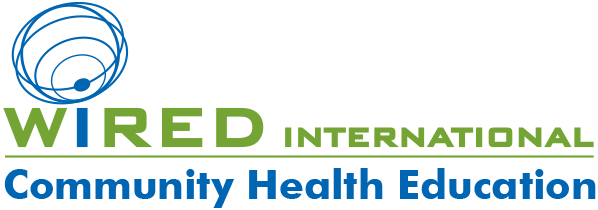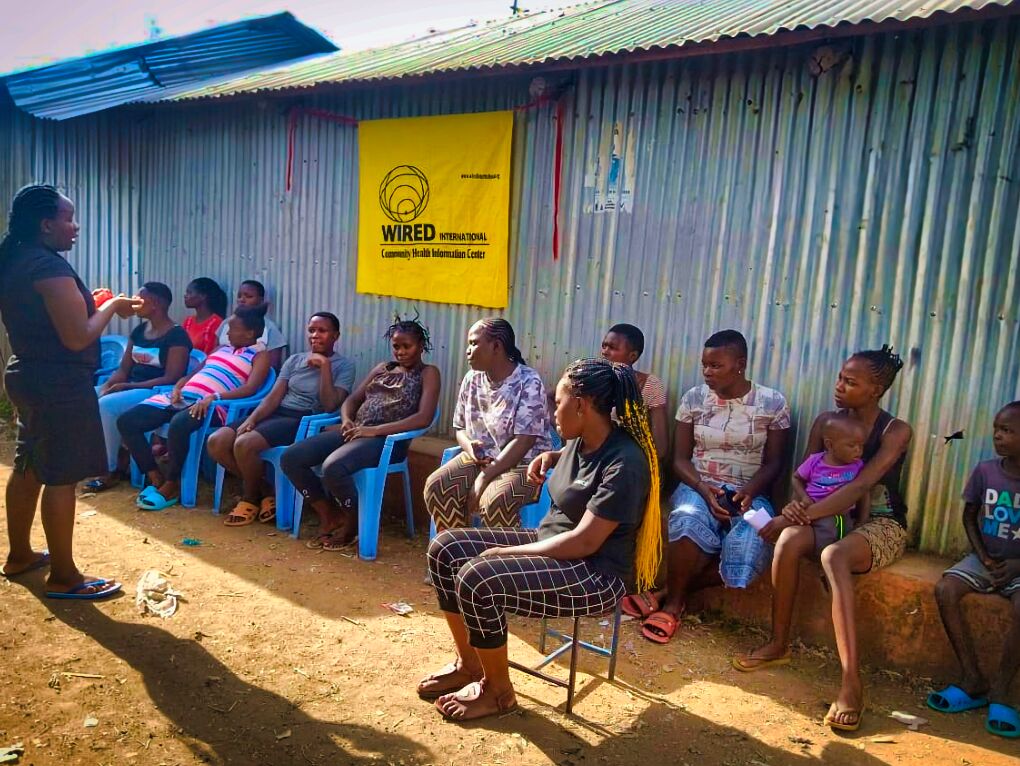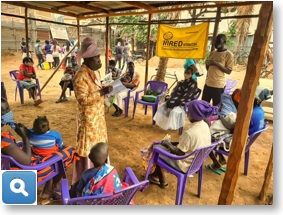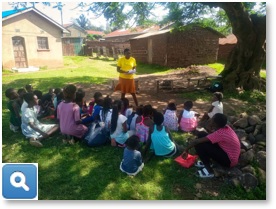An Overview of WiRED’s Community Health Worker Program
Training to Deployment
By Allison Kozicharow; Edited by Staff
Background
As early as the nineteen eighties, the World Health Organization (WHO) reported the critical lack of health care in low-resource communities worldwide — a lack due to the inability of health care systems to provide services and the alarmingly low supply of medical professionals. The health agency estimates that by 2030, there will be a shortfall of 10 million health workers, expanding the equitable health care access gap worldwide. WHO envisioned that community health workers (CHWs) could play a crucial part in providing first-stop health care to underserved populations. Training CHWs became paramount.
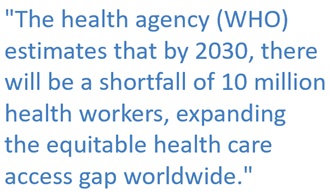 In response to our own recognition of the dire need for health workers, WiRED launched our first CHW training program four years ago in Kisumu, Kenya. Although the curriculum was carefully designed and expertly developed by a team of medical professionals, we were uncertain about how the program would unfold. Why? We graduated our first CHW class one week before the COVID-19 pandemic closed down much of the world. Would our new CHWs be able to serve their community under the pandemic conditions?
In response to our own recognition of the dire need for health workers, WiRED launched our first CHW training program four years ago in Kisumu, Kenya. Although the curriculum was carefully designed and expertly developed by a team of medical professionals, we were uncertain about how the program would unfold. Why? We graduated our first CHW class one week before the COVID-19 pandemic closed down much of the world. Would our new CHWs be able to serve their community under the pandemic conditions?
The good news — for everyone involved and especially for people in low-resource communities — the answer was a resounding “yes” as the CHWs not only provided the services for which they were trained but they stepped in to help people in these informal settlements deal with new health pressures imposed by COVID. WiRED’s CHW program has flourished in Kisumu and now has expanded to other underserved countries.
What follows gives a description of WiRED’s CHW program, a program continually updated and expanded to meet the specific needs of communities facing emerging diseases and a host of other health challenges.
Overview of WiRED’s CHW Program
WiRED’s WHO-compliant CHW program begins with training.
The training curriculum comprises 36 evidence-based modules expertly written by medical professionals:
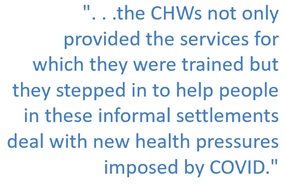 All modules are peer-reviewed to ensure accuracy and relevance.
All modules are peer-reviewed to ensure accuracy and relevance.- The spectrum of topics include anatomy and physiology, infectious diseases, non-communicable diseases, first aid critical care, patient assessment, medications management, health communication and health surveillance.
- The CHWs are trained to provide basic services and to supplement the work of doctors and nurses.
- CHWs are taught in classroom sessions by local medical professionals.
- The course takes 200 hours to complete.
- Each CHW must pass a rigorous final examination.
- CHWs who complete all classroom training and pass the exam are awarded a CHW certificate.
- After earning certificates, all CHWs are required to earn 50 credits each year in continuing medical education (CME). This reinforces their knowledge, provides them with updates on medical developments and enables them to acquire new skills.
The curriculum continues with field work. CHWs:
- Deploy to communities where health care is lacking and people have little access to doctors and nurses;
- Provide basic clinical services;
- Teach communities about disease prevention and care;
- Offer medical screenings by taking vital signs and performing other assessment measures, often under the supervision of a clinician;
- Act as bridges to the medical community through referrals and follow-up;
- Work in schools to teach health to students and to provide health screening;
- Conduct health assessments to monitor the overall health of a community; and
- Work with doctors and nurses when called for to assist in community-wide health prevention and treatment activities.
- Earn mandatory annual CME credits. Some of the topics CHWs can choose to study for their CME requirements include:
- Mother and child health
- Infectious disease prevention and care
- Non-communicable disease prevention and care
- Emerging diseases such as Ebola, Zika, COVID-19, Lassa fever
What Lies Ahead
The success of WiRED’s CHW program keeps growing.
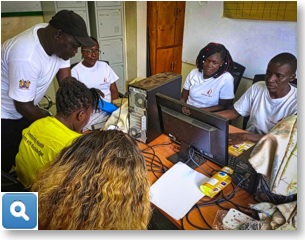 Our original CHW team celebrates its fourth anniversary this year in Kisumu, Kenya, where we continue to train and add new team members. (This team serves the health needs of more than 10,000 people each month — see sidebar). Meanwhile, WiRED is fostering CHW programs in Nigeria, in Armenia and in Liberia.
Our original CHW team celebrates its fourth anniversary this year in Kisumu, Kenya, where we continue to train and add new team members. (This team serves the health needs of more than 10,000 people each month — see sidebar). Meanwhile, WiRED is fostering CHW programs in Nigeria, in Armenia and in Liberia.
The common denominator throughout all of WiRED’s work is prevention through knowledge: educating local people to become participants in their own health care. WiRED’s CHW program teaches CHWs how to elevate their communities to recognize signs and symptoms of disease and to learn and to adopt healthy behaviors.
March Community Health Worker Report
During the month of March 2024, 20 CHWs in Kisumu, Kenya, reached a total of 10,296 people with health services. Working 24 hours per week, each of the CHWs met with at least 51 patients a week, and the largest number seen in a week by a single CHW was 220, most of them in health training classes.
In March the top health-related concerns were, as follows, in order of prevalence:
